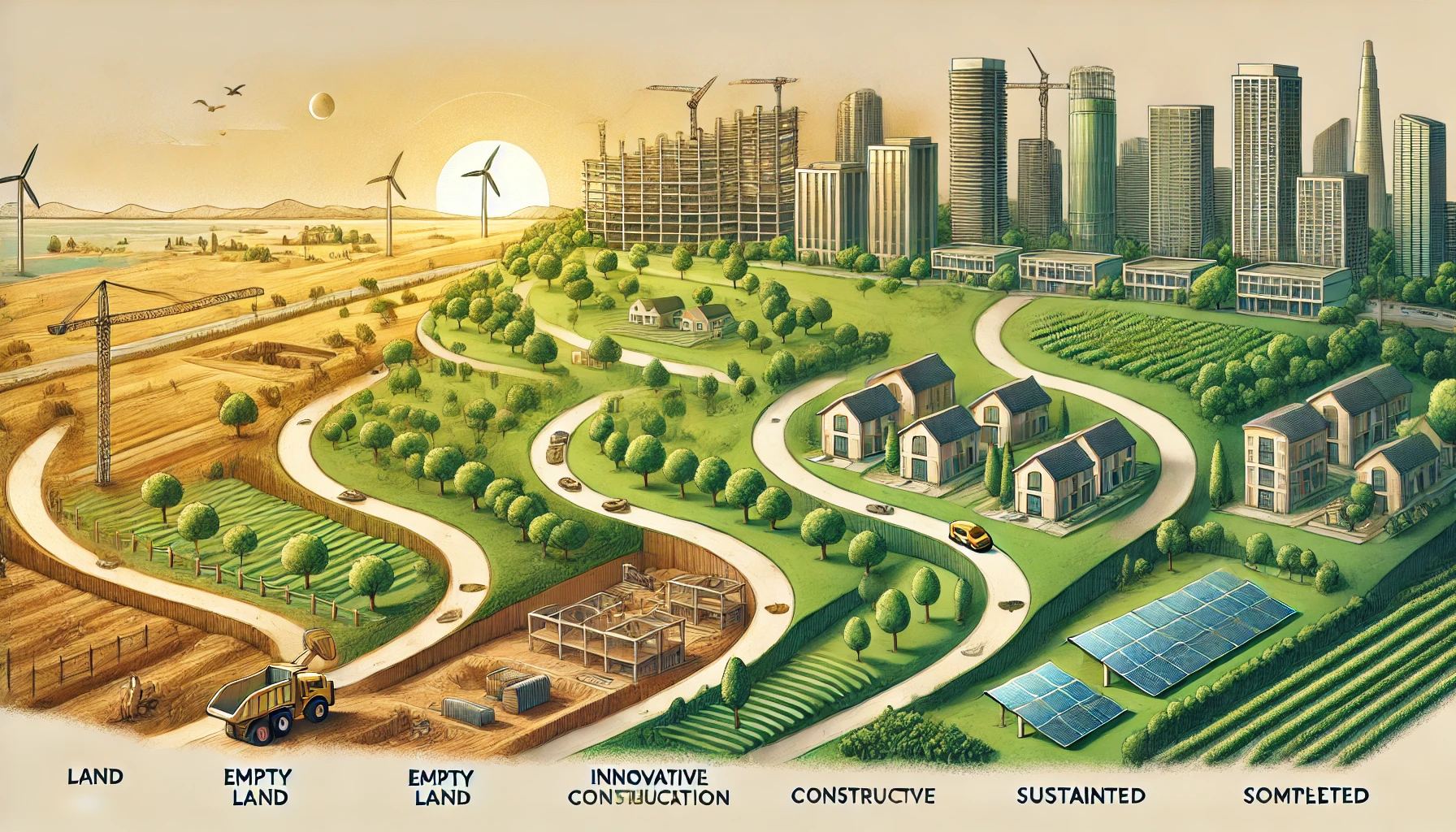Introduction
The real estate industry is experiencing a significant transformation, driven by innovation, urbanization, and growing demand for sustainable living. At the heart of this transformation are lands and builders, two critical components that define the landscape of residential, commercial, and industrial development. Builders bring the vision and expertise needed to turn raw land into thriving communities, while the availability of land dictates where and how these developments can happen.
In this article, we will explore the evolving relationship between land and builders, the factors influencing land acquisition, and how modern builders are shaping the future of real estate through sustainable and innovative practices.
The Role of Builders in Real Estate Development
1. Vision and Planning
Builders play a pivotal role in transforming empty plots of land into functional and aesthetically pleasing properties. From residential homes to commercial complexes, builders are responsible for every phase of development—designing, planning, and constructing spaces that meet the needs of modern buyers.
Modern builders must consider various factors, including location, zoning laws, infrastructure, environmental concerns, and buyer preferences, while working on a project. Their role goes beyond construction; they must anticipate future trends, address community needs, and ensure long-term sustainability.
2. Land Acquisition
A builder’s ability to acquire the right land is crucial to the success of any development project. Factors like proximity to essential services (schools, hospitals, shopping centers), access to transportation, and future growth potential are key in choosing land for development. Builders often work closely with real estate agents, government agencies, and private landowners to secure land plots that align with their project goals.
In highly competitive markets, finding the right land can be challenging. Builders often have to balance land costs with development potential, ensuring that they can maintain profitability while delivering value to buyers.
Types of Land for Builders
1. Residential Land
Residential land is the foundation of housing developments, from individual homes to large apartment complexes and gated communities. Builders looking to create new neighborhoods focus on factors like location, demographics, and market demand. They also work with local governments to ensure proper zoning and access to utilities.
2. Commercial Land
Builders specializing in commercial real estate require land in high-traffic areas that cater to businesses, retail shops, offices, and industries. The value of commercial land is often higher than residential land due to the potential for higher rental yields and long-term profitability.
3. Agricultural and Industrial Land
For projects that require large open spaces, such as factories, warehouses, or agricultural farms, builders look for rural or semi-urban lands. These lands must comply with zoning laws for industrial or agricultural use and may need additional infrastructure development to make them viable for large-scale operations.
Challenges in Land Acquisition and Development
1. Land Availability
With rapid urbanization, finding available land in prime locations is becoming increasingly difficult. Builders often face competition from other developers and industries when trying to acquire land. This scarcity of land in urban areas forces builders to look for alternatives in suburban or semi-urban locations.
2. Zoning and Regulations
Zoning laws and regulations can significantly impact a builder’s ability to develop land. Each piece of land is subject to specific zoning rules that dictate how it can be used—whether for residential, commercial, or industrial purposes. Builders must navigate complex legal frameworks to ensure compliance with local laws and secure necessary permits.
3. Environmental and Sustainability Concerns
Modern-day builders are increasingly focused on creating sustainable developments. Environmental regulations, such as restrictions on land near protected areas or bodies of water, can limit where and how builders can develop. Sustainable practices, including the use of eco-friendly materials, energy-efficient designs, and green spaces, are also becoming important factors in the planning process.
Innovations in the Builder Industry
1. Smart Building Technology
Builders are now incorporating smart technologies into their projects to create more efficient and sustainable buildings. From smart homes equipped with automated systems for lighting, heating, and security to energy-efficient buildings with renewable energy sources, these technologies are helping builders create homes that cater to the modern buyer’s need for convenience and sustainability.
2. Prefabrication and Modular Construction
Builders are increasingly turning to prefabrication and modular construction techniques, which involve constructing sections of a building off-site and then assembling them on-site. This approach reduces construction time, lowers costs, and minimizes waste, making it a popular choice for builders working on large-scale projects.
3. Sustainable Development
Sustainability is at the forefront of modern real estate development. Builders are now prioritizing eco-friendly materials, green construction practices, and energy-efficient designs to reduce their environmental footprint. Concepts like green buildings and net-zero energy homes are gaining traction as builders work to create more sustainable, long-lasting developments.
The Future of Lands and Builders
As demand for real estate continues to grow, the relationship between lands and builders will remain critical in shaping urban and rural development. With advancements in technology, sustainable practices, and smart urban planning, builders are expected to lead the charge in creating the cities and communities of tomorrow.
The future of real estate will likely involve more intelligent land use, innovative construction techniques, and a focus on environmental impact. Builders who can adapt to these trends and leverage new technologies will be in the best position to capitalize on the opportunities presented by the evolving landscape of land development.
Conclusion
The dynamic interaction between lands and builders is driving the future of real estate development. Builders must continuously adapt to market trends, technological advancements, and regulatory challenges to create sustainable, functional spaces. Whether developing residential homes, commercial properties, or industrial complexes, builders play a vital role in transforming land into thriving communities.
For those looking to invest in real estate or get involved in property development, understanding the significance of lands and builders is essential to navigating the ever-changing world of real estate.
To buy RERA Certified & DTCP Approved Gated Community Villa Open Plots in Andhra Pradesh & Telangana please Contact:
For Sales : 8179712384
Mail : sales@openplots.net
